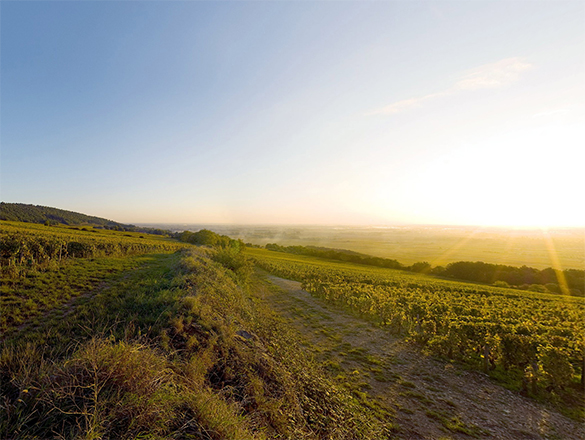

The vineyards of Bourgogne produce some great wines with a historical and international reputation. However, the region is not simply limited to its iconic appellations. In addition to its Village Premier Cru and Grand Cru AOCs, it also produces a range of wonderful Régionale and Village appellations to explore.
You will also find a full list of the Bourgogne’s Climats and lieux-dits on this page.
Check out the complete list of the 84 Bourgogne appellations.
However, your exploration has only just begun. Bourgogne wines have never before offered such high quality. Besides our range of internationally celebrated wines, try some of our lesser-known appellations where there are lots of surprises in store.
And for a fun way to find out more about the wines on offer, try out our “Which Bourgogne wine is right for me?” quiz, or check out Bourgogne Maps to take an interactive tour of the region.
Village appellation
VIGNOBLE DE LA CÔTE DE BEAUNE
31 juillet 1937
Almost all whites - Chardonnay.
Reds - Pinot Noir.
Area under production*:
1 hectare (ha) = 10,000 m2 = 24 ouvrées.
Whites: 204.72 ha (including 95.83 ha Premier Cru).
Reds: 0.42 ha (including 0.05 ha Premier Cru).
Average annual yield**:
1 hectolitre (hl) = 100 litres = 133 bottles.
Whites: 9,828 hl (including 4,198 hl Premier Cru)
Reds: 19 hl (including 1 hl Premier Cru).
*In 2022 **5-year average, 2017-2021
Appellation Village of the Côte de Beaune region (Côte-d’Or).
This appellation includes 17 Premiers Crus Climats.
The commune of Puligny-Montrachet also produces 5 Grands Crus (see Appellation sheets No. 52).
Red wines from the defined area of this appellation may use the alternative appellation CÔTE DE BEAUNE-VILLAGES.
Producing commune: Puligny-Montrachet.
The appellation PULIGNY-MONTRACHET and PULIGNY-MONTRACHET PREMIER CRU may be followed by the name of the Climat of origin.

White: this wine is a bright gold colour with greenish highlights, becoming more intense with age. The bouquet brings together hawthorn blossoms, ripe grapes, marzipan, hazelnut, amber, lemon-grass and green apple. Milky (butter, hot croissant) and mineral aromas (flint) are commonplace, as is honey. Body and bouquet blend into a subtle harmony. This wine combines grace with a welldefined character and a remarkable concentration.
Red: the red wine is bright ruby when young, darkening with age. Its bouquet is divided between small red fruits (raspberry gooseberry) and black fruits (blackcurrant blackberry) later shifting towards leather, musk and fur. Tender and well-fruited, it is well put-together and does well with several years’ aging.

White: Puligny-Montrachet and its Premiers Crus are concentrated and well-bred. Their balance, aromatic complexity, and purified style demand delicate but rich food. They are equally at home with poultry in sauce or veal fried with mushrooms. Their great distinction elicits a grateful response from foie gras, lobster, crawfish, and grilled or fried sea-fish. On the cheese-board, its natural allies are goat cheeses, Reblochon, or soft-centred cheeses like Brie de Meaux.
Serving temperature: 11 to 13°C.
Red: its opulent and fleshy structure will lend lusciousness and fullness to veal, pork, and roast fowl, as well as to hard cheeses like Comté.
Serving temperature: 14 to 16°C.

Puligny-Montrachet, along with Chassagne, is the most perfect expression of the Chardonnay grape. The appellation was created in 1937 on soils separated by only a few metres from the Grands Crus. The white wines have well-defined personalities and an established reputation. The plots which adjoin the hamlet of Blagny produce an excellent red wine from the Pinot Noir grape.

The vines in many cases occupy brown limestone soils, or soils where limestone alternates with marls and limey-clays. Soils are deep in some places. In others, the rock is exposed at the surface. Where there are clayey alluvia, these are coarser higher up and finer at the foot of the slope. Exposures East and South-East. Altitude: 230-320 metres.
